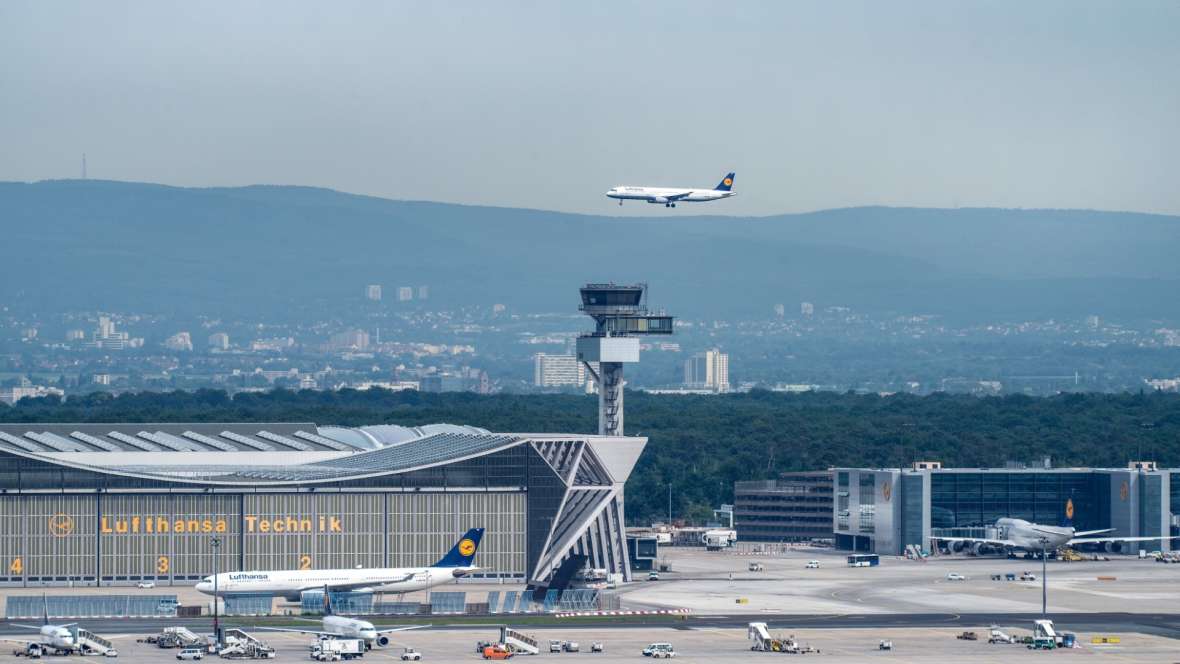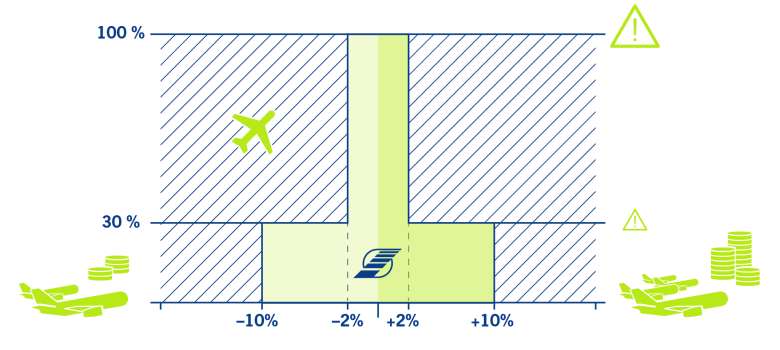

Charges
Terminal charges are payable for each take-off under the control of DFS. They depend on the maximum take-off weight of the aircraft. This money not only finances the work of DFS. It also covers the costs of the German Meteorological Service (DWD) and supervisory authorities, among others.
DFS receives en-route charges for each flight crossing the German airspace it controls. In addition to the weight of the aircraft, the length of the distance travelled is also taken into account. En-route charges are levied centrally by EUROCONTROL, the European Organisation for the Safety of Air Navigation. EUROCONTROL distributes the money among the Member States and the national air navigation service providers, retaining one part of the charges.
How charges are calculated
In 2025, the unit rate for terminal services amounts to €380.71. For an Airbus A320 with a maximum take-off weight (MTOW) of 73.5 tonnes, this means €497.73will be due. By the way, terminal charges are only levied once, when the aircraft takes off.
Charge = (MTOW/50)0,7 x unit rate
The unit rate for en-route services amounts to €99.91 in 2025. An Airbus A320 with a maximum take-off weight (MTOW) of 73.5 tonnes has to pay just under €676.99 in en-route charges for a flight from Hamburg to Munich.
Charge = (MTOW/50)0,5 x distance flown in km/100 x unit rate
En-route charges are not calculated according to the length of the actual distance flown. The decisive factor is rather the great circle distance, i.e. the shortest distance. Measurements are taken between the entry and exit points of the flight information regions through which the aircraft passes. The terminal control area, the immediate area around an airport (20 km), is excluded.
Current en-route unit rate (Eurocontrol)
Information on the en-route charges system and payment conditions can be found on the Eurocontrol-Website.
European regulation
European legislation has constructed a complicated mechanism to determine air navigation charges. The charges are based on traffic forecasts, which are prepared on a regular basis. If the actual income from charges is higher than the costs, the air navigation service provider is allowed to keep all or part of the money. Conversely, they have to bear part of the risk if the charges do not cover their costs. This form of regulation is intended to provide air navigation service providers with a performance incentive.
If traffic volumes develop differently than planned, air navigation service providers and airlines share the risk. A tiered model is used. If any fluctuations in the traffic volumes are outside the specified range, DFS must raise or lower the charges with a two-year delay. Additional revenue will then be returned to users through lower charges, and reduced revenue offset by higher charges.

How charges are paid
Nowadays, DFS only sends invoices by post in individual cases. Generally, airlines receive the notification of charges by e-mail. The only requirement is that you sign and return a contract to us. This makes it easy to view and archive invoices. If you have any questions, please contact gebuehren@dfs.de.